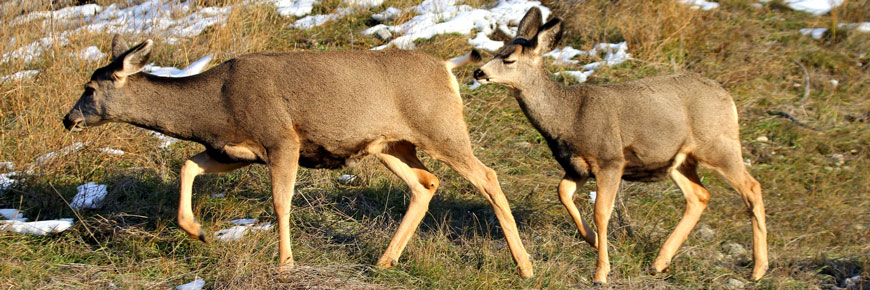
Deer family
Kootenay National Park
There are four members of the deer family in Kootenay National Park. Deer have antlers that grow, fall off and re-grow annually. In spring, the males grow antlers that develop encased in a soft, fury coating called velvet. In fall, this velvet is rubbed off and the males use their fully grown antlers to dominate other males when competing for females. Over winter, the antlers drop off, becoming a valuable source of minerals for small animals.
Moose | Wapiti (Elk) | Mule Deer | White-tailed Deer
Moose
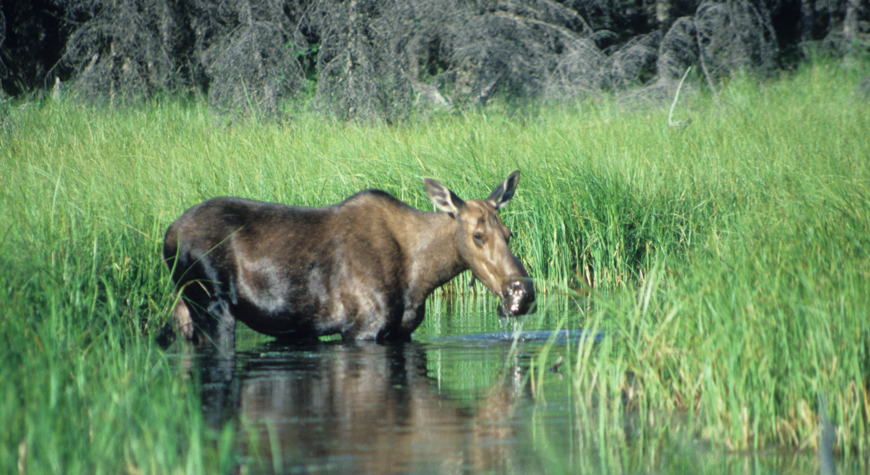
Moose, the largest member of the deer family, are solitary animals. They have long gangly legs and antlers that form a palm shape. The flap of skin hanging from their throat is called a dewlap. Moose are great at winter travel because they have large hooves that act as snowshoes!
Wapiti (Elk)
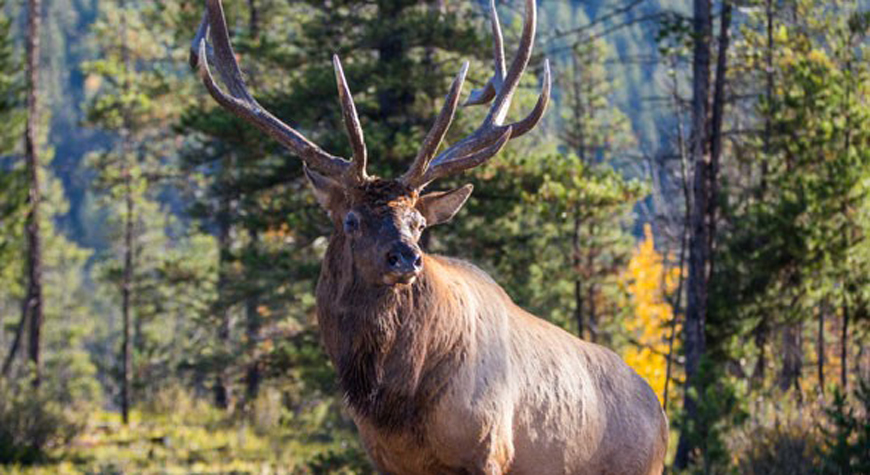
Elk have dark brown heads and necks, lighter brown bodies and cream-coloured rump patches. A bull or male elk's antlers can reach 4 feet above its head - this means that from hoof to antler tip a bull elk can reach nine feet! Elk can be a very dangerous. Watch closely for any aggressive signs (raised ears, glaring looks, snorting, stamping feet) and keep a thirty meter distance between yourself and all elk.
Mule Deer
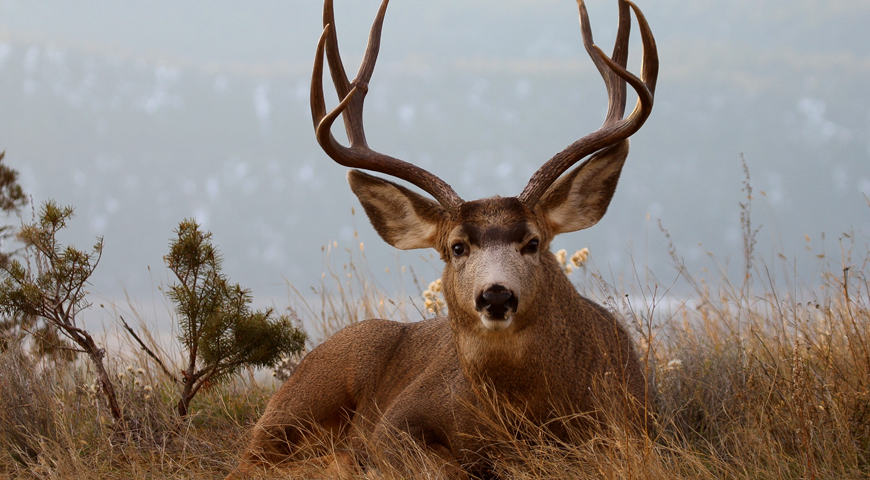
Mule Deer have large ears and a rope-like black-tipped tail . They like to be in small groups in drier open areas. In summer they eat shrubs and broad-leaved plants. In winter they forage for evergreen twigs, saplings, and shrubs.
White-tailed Deer
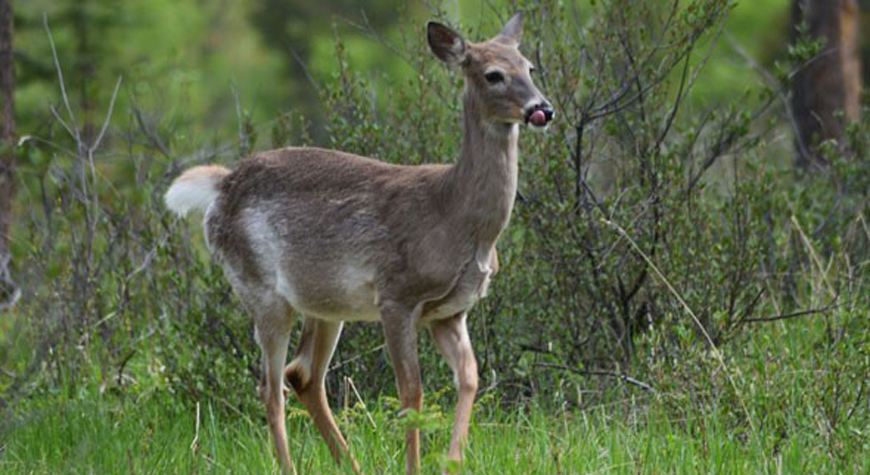
Smaller than Mule Deer, White-tail Deer have reddish coats and triangular-shaped long brown tails that they hold upright when alarmed, exposing the white underside. Look for them at dawn and dusk in the southern half of Kootenay.
Related links
- Date modified :